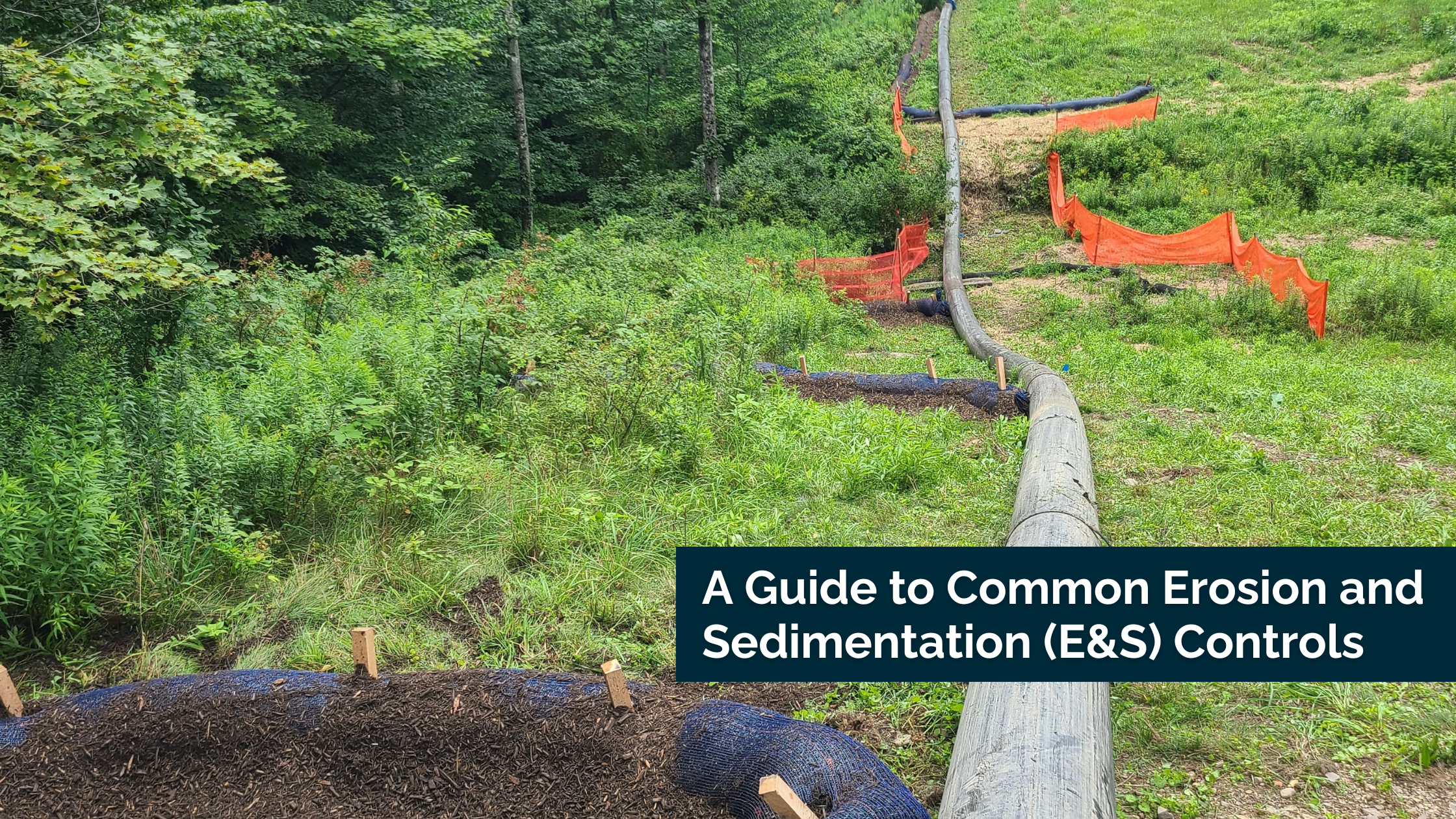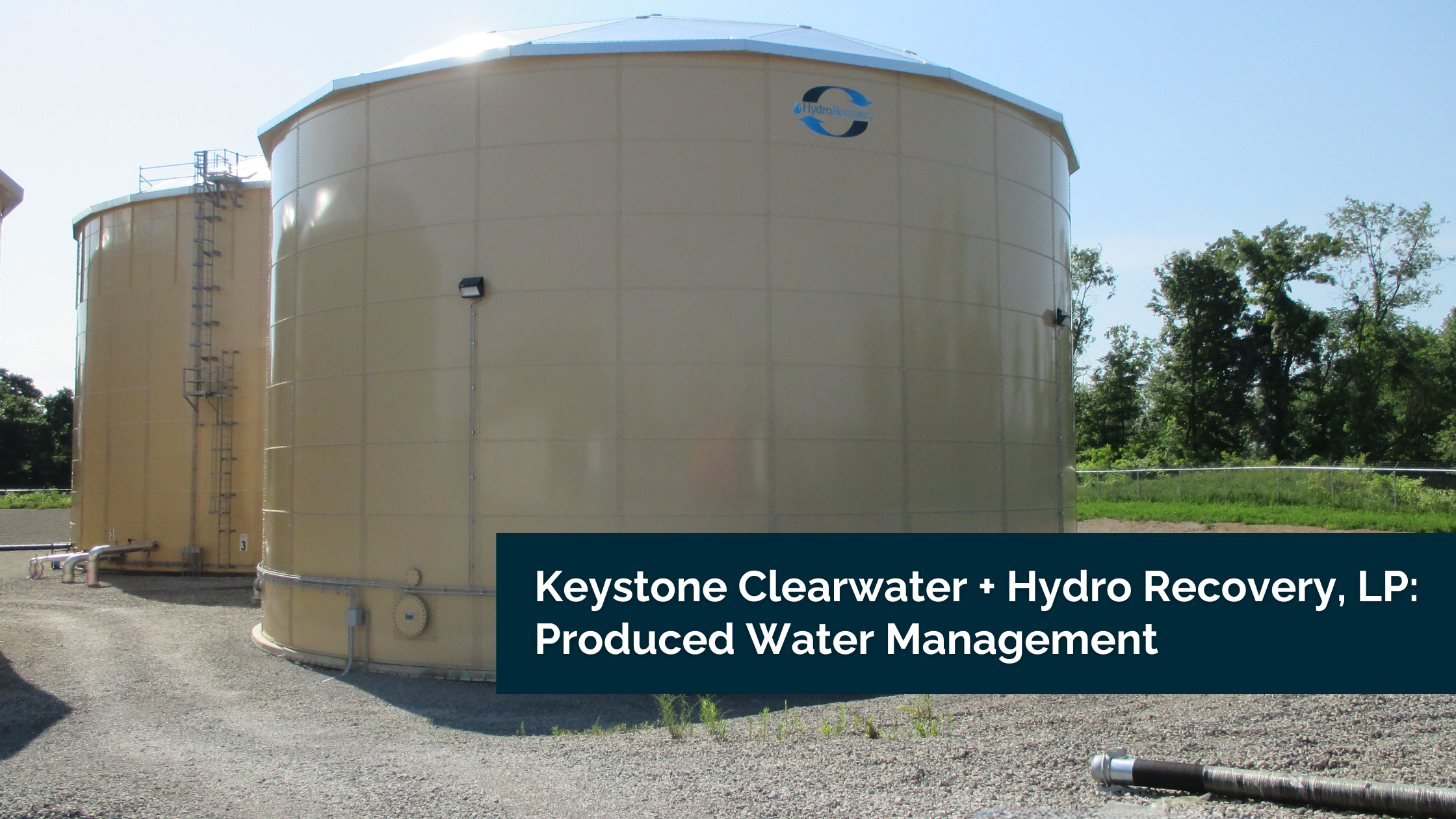
November 16, 2023
A Guide to Common Erosion and Sedimentation (E&S) Controls
What are E&S controls? E&S controls are measures that prevent soil from eroding and sedimentation from damaging the environment. Soil may be eroded, or worn away, by a natural action (such as water or wind), a chemical action, or human interaction. Often, sedimentation builds up and causes pollution as a result. Erosion and sedimentation that are accelerated and not naturally occurring are regulated in Pennsylvania through the state Department of Environmental Protection. Causes of accelerated erosion include surface mining, construction, agriculture, and excavation.
There are many approved best management practices (BMPs) that can be used as E&S controls. Here are a few that Keystone Clearwater Solutions uses.
Water bars
Water bars are often used to direct stormwater runoff on pipeline rights-of-way. Built by creating diagonal ridges, they discharge runoff to a stable area, including sediment traps and basins.
Filter socks
Filter socks are fabric tubes typically filled with compost that provide a barrier to sedimentation and naturally filter runoff. Filter socks must be inspected regularly and maintained to ensure effectiveness.
Erosion control matting
Erosion control mats stop the direct erosion of soil by blanketing sloped areas and preventing erosion while vegetation is established.
Cofferdams
Cofferdams are E&S controls used to divert or temporarily dam a stream. They are typically made from sandbags or Jersey barriers. For a stream crossing, cofferdams are used along with pumps so work can be conducted in a dry area without contamination of the stream.
How is erosion and sediment control regulated?
In Pennsylvania, the Environmental Quality Board (EQB) approved statewide regulations for E&S controls, which are authorized under the state’s Clean Streams Law. According to Chapter 102 regulations, anyone conducting earth disturbance activities must use best management practices BMPs to minimize the potential for accelerated erosion and sedimentation and obtain a permit when specific criteria are met.
“With our company’s deep roots in environmental engineering, we understand the environmental regulations in the region, and the impact on the area where we live and work,” said Matthew King, Vice President of Engineering and Construction for Keystone Clearwater Solutions. “We strive to ensure natural gas development projects have minimal environmental impact and are planned appropriately.”
Expert solutions
Since 2009, Keystone Clearwater Solutions has been delivering water transfer and management for the natural gas industry in the Marcellus shale region. Our general construction services for natural gas operators include building pipelines, pad sites, access roads, underground utilities, directional drilling, road maintenance, environmental and safety controls installation, and other related earthwork and excavation.
With an experienced workforce and a large inventory of equipment, Keystone Clearwater Solutions serves a variety of needs for oil and gas operators in the Mid-Atlantic region. We provide water transfer, our proprietary WaterForce: automation and control systems, temporary pipeline construction and operation, pipeline inspection, and general construction services. With our fleet of trucks and transport trailers, we manage water hauling and transportation of produced water between well sites, storage, and wastewater recycling facilities. We can also match you with the right equipment and the right team to get the job done. Ask about our equipment rentals and sales and roustabout services.
Request a quote or call us at 717-508-0550 for details.

